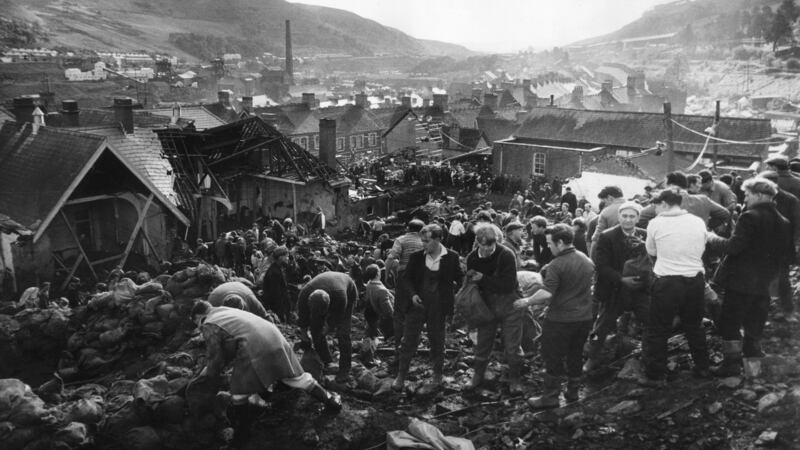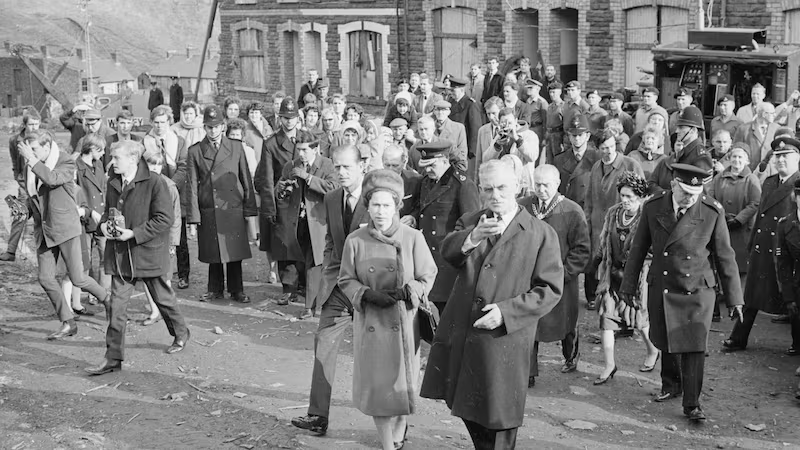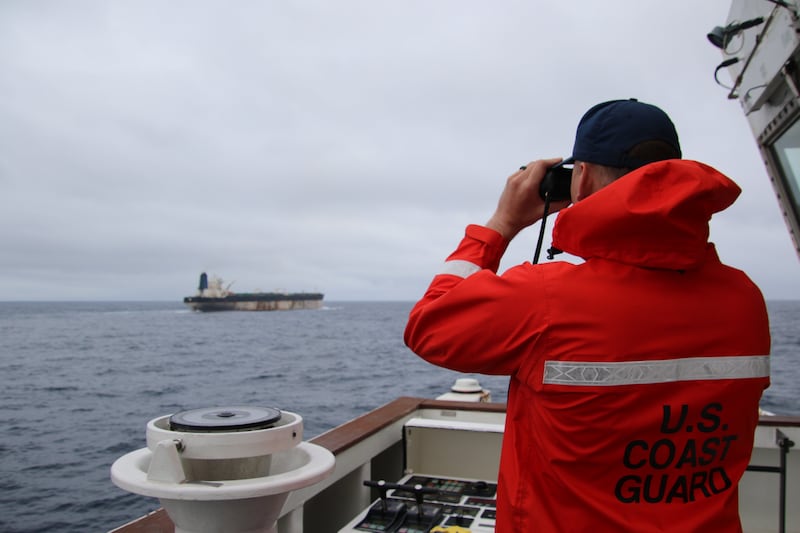October 21st, 2016 marks the 50th anniversary of the Aberfan disaster. At 9.15am on that day in 1966, just as Pantglas junior school was beginning its first lesson, a coal tip situated above this small village near the South Wales industrial town of Merthyr Tydfil slid down the mountain, enveloping first a farm and then Pantglas school itself.
Though some did manage to escape, it was a catastrophe that claimed the lives of 144 people, 116 of whom were children.
While Wales is no stranger to mining disasters – between 1853 and 1974, 24,470 colliery workers were killed at work in South Wales – the loss of so many young lives and the impact of the disaster on the community since, make Aberfan the single most shocking event in modern Welsh history.


Cardiff University's School of Journalism, Media and Cultural Studies held a one-day conference focusing on the themes of remembering, forgetting and moving on in the media and in the community. It brought together not only survivors of the tragedy, but also media practitioners and academics. They included photojournalist IC Rapoport, whose presentation was of a breathtaking poignancy that moved all to tears, and the elder statesman of the Welsh media, Vincent Kane, who reported from Aberfan in 1966.
Kane’s closing keynote speech was passionate, poetic, angry and robust. He was devastating in his condemnation of both the National Coal Board and the miners’ union, which both knew that the tip was built on a sloping hillside upon two underground springs that were clearly shown on ordnance survey maps. They were guilty of moral cowardice – failing to act on the knowledge that the tip could slide at any moment. But those who knew of the potential for tragedy failed to act to remove the tip because they knew that attempting to do so would put the existence of mining in Merthyr in peril.
With 50 years’ hindsight, how can we fail to conclude that the underlying cause was the intense pressure brought to bear on a frightened coal mining community by the policy of widespread and rapid pit closures implemented by the National Coal Board, supported by the National Union of Mineworkers and two governments, Conservative followed by Labour?
Kane was critical of journalism, too. In the years that followed the tragedy the media had not been as forceful as it could have been in exposing the truth and defending the surviving community. In an atmosphere in which the residents of Aberfan were labelled greedy troublemakers, the media had reneged on its responsibility to hold power to account. Kane said.
The press, the media, the fourth estate, has an abiding responsibility to probe and to penetrate. In the Aberfan period, perhaps Wales’s darkest hour in the 20th century, we should have been passionate in pursuit of the truth. Instead we were pedestrian.
Journalists who covered the original events have in the recent past spoken candidly about how they were affected. John Humphrys, then a young reporter at Television Wales and West and a man very familiar with the area, drove up to Aberfan on the morning of the disaster and witnessed first-hand the "great mass of muck and filth and utter chaos" as rescue attempts got underway. Unsurprisingly, Humphrys says the impact upon him has been profound. He said in 2006: "I have been a journalist for getting on for half a century now. I have reported wars and disasters all over the world, many of them involving many, many, many more deaths…. I have always said and I will always say that nothing – nothing – I will ever see will compare to the horrors of that day."
Also in 2006, Malcolm Rees, who was the first reporter from the South Wales Evening Post on the scene, spoke about the worst event he had to cover coping by “just getting on with his job” amidst the eeriness of it all. Rees’s colleague, chief photographer Alan Trethewy, was more open about his distress. He said: “The camera acts like a barrier between yourself and the reality of what is going on around you. The tragedy is something I will never forget — I remember it like it was yesterday…..It is just burned into my memory. It was the most horrific thing I covered throughout my whole career.”
At the time, though, the presence of the national and international media in the immediate aftermath of the catastrophe concerned some local people and politicians. In the course of researching her novel, Black River, Louise Walsh, who also appeared at the conference, accessed the National Archives and found that in 1967 Selwyn Jones, the town clerk of Merthyr Tydfil, wrote to Cledwyn Hughes, the secretary of state for Wales, requesting that he take action to ensure that the “glare of publicity” be taken away from the residents of Aberfan.
Walsh also records a letter from S O Davies, MP for Merthyr, to the editor of the Sunday Express expressing his disgust over an article in June 1967 which described the people of Aberfan as the “most tragically divided in the world”. The article was rhetorical filth, wrote Davies: “In all the cruel travesties of fact that have appeared in some organisations of the press, from the day of this terrible disaster the Sunday Express has…. exceeded all of them in fabrication, distortion and irresponsible journalese.”
But this is not the whole picture. As Pantti and Wahl-Jorgensen have pointed out, in many instances the national press sided with the mining village and gave its people opportunities to express their feelings of rage and resentment toward the (still) unbelievably mendacious National Coal Board and government. They state that the early media narrative of the disaster was “around a working-class community energised with the passion of anger against the National Coal Board, which was reported as having ignored warnings of danger for many years”.
In this sense, with the tragedy still bitingly raw, the national press was demonstrating its ability to act on behalf of the disenfranchised and to hold power to account by mobilising a “community of moral outrage”.
One day after the tragedy a Guardian editorial stated: “The Welsh, who are used to tragedy, have now suffered their worst. The pits themselves do not kill children….There must be a safe way for the Coal Board to get rid of its waste. There must be a way of ensuring that yesterday’s tragedy is not repeated.”
The Aberfan disaster was also the first national tragedy to be covered extensively on television and, in the opinion of Stuart Hood, who was controller of BBC television in the early 1960s, there was no more accurate or poignant method of reporting the tragedy than to “let us see the faces of the men and women waiting as the rescuers dug into the black mud”.
For Hood, writing in 1967, television was an enabler, facilitating involvement in events where Aberfan became part of a greater community. Royal weddings, the football World Cup and Churchill’s funeral had all been events where national community had been created by television, Hood argued, it was therefore right and proper that at a moment of national tragedy television cameras should be present.
Perhaps Hood was right – and to be fair to him he does acknowledge that there is a certain brutality about journalism in these situations – but his rather idealistic words would have provided little comfort to the bereaved families who saw their shattered environment overrun with the world’s television crews all eager to send images back home.
This was something that occurred to Gwyn Llewelyn, the first television correspondent to arrive in Aberfan. In 2013 he told Media Wales of the broadcasting circus and the angry local reaction. He came, he said, to feel a certain guilt very quickly: “I did ask myself numerous times what was on earth I was doing standing there reporting when the rescuers were up to their waists in slurry clearing the debris. I knew I was there providing a service by reporting from the scene of the tragedy, but I did feel like something of a voyeur staring at the heroic efforts of these people.”
Llewelyn’s concerns mirror those of many reporters who have covered disasters and the like. As Al Tompkins of the Poynter Institute for Media Studies put it in 2001, a journalist’s symptoms of stress are similar to those of firefighters or police officers in the immediate aftermath of tragedies – but while public safety workers are routinely offered counselling after trauma, “journalists are merely assigned another story.”
In the aftermath of Aberfan very few people, journalists or otherwise, received adequate counselling or psychological treatment. During the course of the day at Cardiff University devoted to the discussion of events, what became increasingly clear was the range of people represented. There were survivors of the actual landslide itself, ex-police officers, former Coal Board officials and journalists – all in empathetic unity.
So whatever is written or broadcast about Aberfan now, as we approach the 50th anniversary of this tragedy, must be undertaken with greatest of care and respect for those still living with daily reminders of what happened to them.
Sitting in the comfort of a warm lecture theatre listening to the testimonies of those speaking, some for the very first time about their experiences, I was struck by the searing honesty and bravery of those who stood. Wounds have not fully healed, memories have not dimmed.
Not for the first time, the privilege of my own existence, concerned as I am by the frustrations and trivialities of modern life, shamed me. Here were people whose entire lives had been shaped by the morning of October 21sr, 1966 and, in the words of Professor Kevin Morgan, we should respect their knowledge.
John Jewell is director of undergraduate studies at Cardiff University's School of Journalism, Media and Cultural Studies
This article was first published on Subscribe, a media blog edited by Liz Gerard














